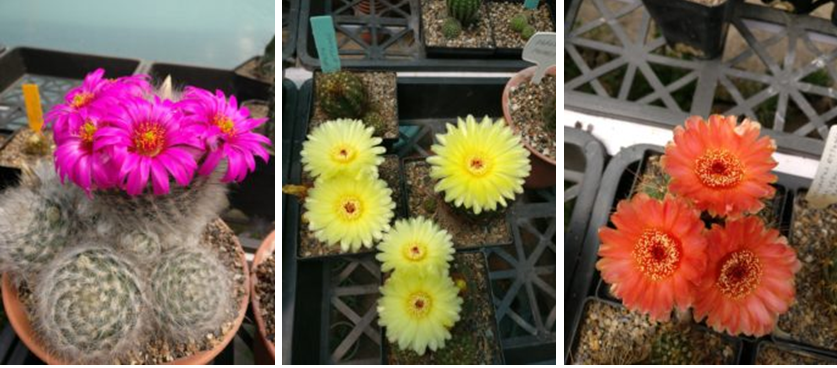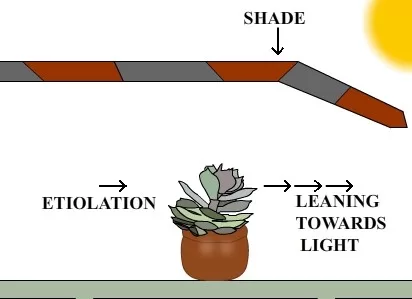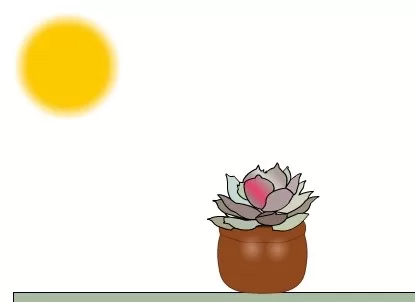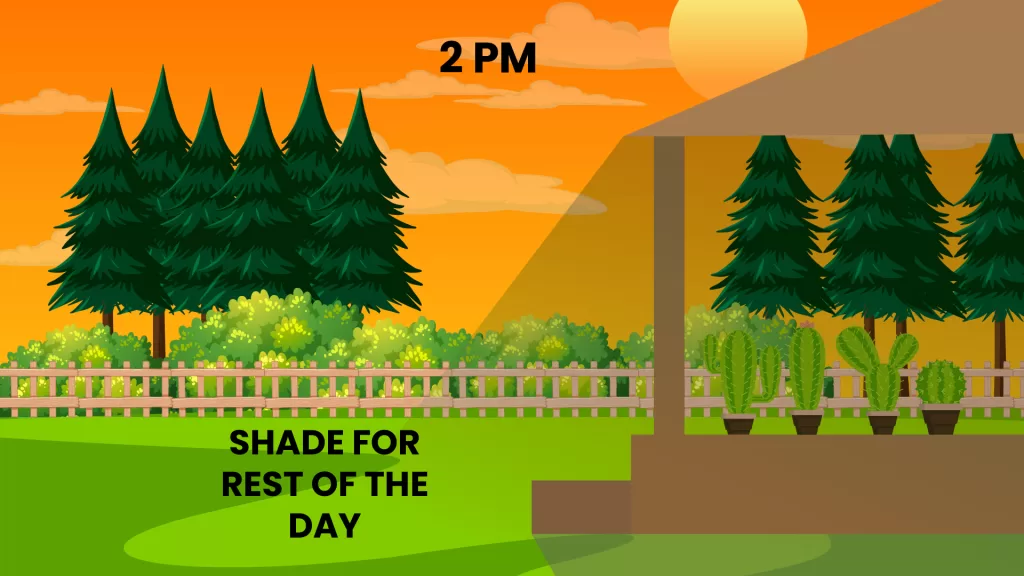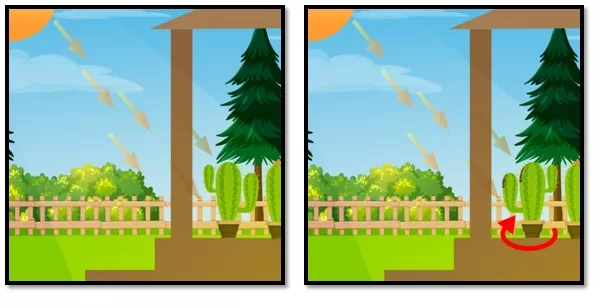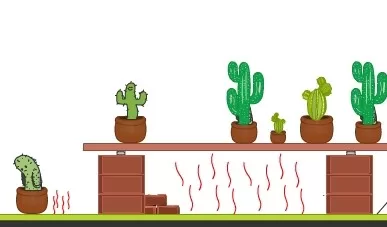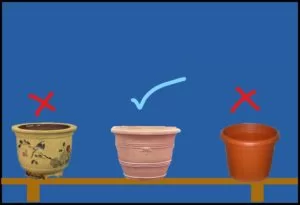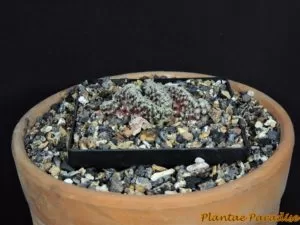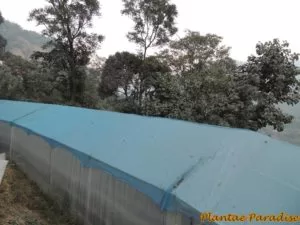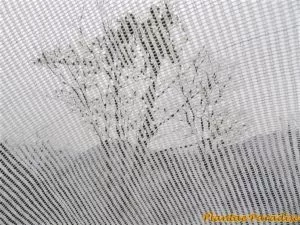When a beginner gets into this hobby he is unaware that these plants are delicate and often get sunburnt. This write up essentially should be read by all newbies before they spend time and resources to buy cactus.
The intriguing question of why cacti, known for thriving in some of the harshest environments, can suffer from sunburn when exposed to seemingly mild sunlight at home, often baffles new enthusiasts in cacticulture. It might seem counterintuitive; cacti, the quintessential desert dwellers, should logically be impervious to a bit of extra sun, right?
This dilemma can be likened to children who are overprotected and raised in sheltered, comfortable environments. These kids, often coddled, fed well, and kept in cool, humid conditions with minimal physical exertion, tend to be less resilient. When suddenly confronted with the harsh realities of the outside world – without protective measures like sunblock and sunglasses – they struggle, experiencing sunstroke, sunburn, headaches, and other discomforts. The same principle applies to cacti. Buy Cactus online from plantaeparadise.
Understanding Sunburn in Cacti
Sunburn in cacti refers to the damage inflicted on the plant tissue due to excessive or intense sunlight exposure, particularly when the plant isn’t acclimatized or hardened to such conditions. It’s a stress response, much like in humans, where the plant’s tissue is harmed by ultraviolet (UV) radiation. This can happen when a cactus, often grown in controlled environments like nurseries or homes, is suddenly exposed to direct, intense sunlight.
Before you buy cactus or cacti, as they are called in plural form, you should understand some essential concepts:
- Inherent Adaptation of Plants: Plants are inherently adapted to thrive in specific light conditions. This innate adaptation dictates their initial growth patterns and health.
- Adaptability to Changing Light Conditions: When exposed to light conditions different from their natural setting, plants exhibit a remarkable ability to adapt. This adaptation is crucial for their survival and growth.
- Continuous Environmental Synchronization: Plants are in a constant state of adjustment to their environment, particularly to changes in light. These changes can be both man-made (such as artificial lighting) and natural (like seasonal variations). For instance, in a place like Delhi, India, situated at a latitude of 28° 40′ N, the daylight length fluctuates significantly – from about 10 hours and 20 minutes in winter to 14 hours in summer. This 30% variation in daylight duration is compounded by changes in light intensity from winter to summer.
- Natural Adaptation Through Seasons: Plants naturally adapt to these seasonal changes in light and do not suffer damage like sunburn because nature allows them the time to adjust gradually. To buy cactus click here.
- Challenges for Succulent Enthusiasts in India: Succulent enthusiasts, particularly in the hot plains of India, face a unique challenge. Balancing light and heat is a delicate task. Increasing light exposure can inadvertently raise temperatures, potentially causing root rot or burns in the plants. On the other hand, cultivating them in too much shade can lead to problems like etiolation, where expensive varieties like Echeverias become elongated, losing their compact form and aesthetic appeal, and turning into less desirable specimens.
Strategies to Prevent Sunburn in Plants
Gradual Adaptation is Key: Plants, like any living organisms, need time to adapt to their environment. Consider a typical plant on a balcony during a midsummer day: For most of the 24-hour cycle, it adjusts to low-light conditions. However, it may face a brief period of intense, harsh sunlight daily. This abrupt shift can cause scorching on the tender foliage due to the sudden exposure to bright sunlight.
Monitoring Seasonal Sunlight Changes: As seasons change, especially in midsummer, the sun’s position shifts, altering how sunlight penetrates your balcony. This change might affect plants that were previously in more shaded areas. It’s vital to observe these variations in sunlight exposure caused by the sun’s movement towards or away from the North Pole.

The Unexpected Consequences of Balcony Washing: A common, yet unforeseen event like washing your balcony can inadvertently cause sunburn in your plants. This might happen not because of relocation but due to the rotation of the pots during cleaning. If the side of the plant that was previously shielded from the sun, and thus adapted to lower light, is suddenly exposed to direct sunlight, it can suffer from sunburn. To buy cactus online click here.
Understanding Plant Physiology in Light Adaptation: Plants undergo physiological changes to acclimatize to their lighting environment. The side of a plant that is used to shade adapts to receive less light. When this side is suddenly exposed to intense, direct sunlight without time to adjust, it suffers from sunburn. Plants maintain a delicate balance in response to their light environment, and even a minor alteration in their orientation relative to the sun can result in significant stress, such as sunburn.
In essence, preventing sunburn in plants involves understanding and respecting their adaptation process to light changes. Monitoring and managing their exposure to sunlight, especially during seasonal transitions or after disturbances like cleaning or rearranging, is crucial for their health and well-being.
Challenges and Solutions for Rooftop Gardening in Hot Climates
Rooftop gardens, sunny balconies, and open terraces, especially those with smooth tile surfaces or basic brick-and-mortar structures, often become challenging environments for plants during summer. In these settings, plants are prone to experiencing stress related to high temperatures. This stress can manifest in several ways: stunted growth, dehydration, and the sudden onset of root rot. The damage from this stress can be extensive, affecting the plant right to its core, or it might remain localized at the juncture of the root and the main body, leading to gradual shrinkage and weakening of the plant.
The Role of Pot Materials in Plant Health
The choice of pot material plays a significant role in the health of plants in these hot environments. Ceramic pots, known for their thick and non-porous walls, can retain a lot of heat. This trapped heat can effectively ‘roast’ the roots of the plants, exacerbating stress and damage. Similarly, plastic pots are not ideal as they, too, contribute to overheating due to their heat-trapping nature.
In contrast, basic earthen terracotta pots are far more suitable for plant health in such climates. Their thick, porous walls are less efficient at trapping heat. The tiny air cavities within these walls serve as natural insulators, and the pores permit evaporative cooling. This phenomenon helps to regulate the temperature around the plant roots, creating a more favorable growth environment. To buy cactus and best pots for your plants click here.
Watering Practices for Cacti and Succulents
An important consideration in rooftop gardening involves the timing and method of watering, especially for plants like cacti and succulents. Watering these plants during the hottest part of the day, often misconceived as a cooling technique, is actually detrimental. This practice can lead to root rot, characterized by mushy, decaying roots, ultimately causing the plant to deteriorate and die.
Innovative Solutions for Pot Insulation
For gardeners who are reluctant to transfer plants from ceramic pots or plastic to terracotta pots due to the time required for the plant to reestablish itself, an innovative solution exists. One can insulate the plant’s existing smaller pot by placing it inside a larger pot filled with porous media. This configuration allows the outer pot to act as a cooling shield for the inner pot, mitigating the need for excessive watering and reducing the risk of temperature-related stress.
The Right Kind of cactus based media helps cool the roots and plants.
Porous granular cinder based medias with appropriate additives help keep the plant cool due to evaporative cooling without excessive waterlogging.
To buy cactus medias / cactus soils click here.
Managing Sun Exposure for Plants: Strategies and Recovery Tips
For plant enthusiasts, dealing with the intense sunlight can be a significant challenge. Here are some strategic measures to help manage the effects of Ra, the Sun God, on your beloved plants:
Utilizing Shade Nets: Shade nets are a highly effective way to protect plants from harsh sunlight while still promoting healthy growth. These nets are particularly beneficial in preventing issues like etiolation (excessive stretching) and leaning in plants. Under a shade net, cacti and succulents often grow more compactly and with enhanced beauty. Additionally, these nets can provide protection from other elements and threats like hail, squirrels, monkeys, and unwanted attention.
Light Blocking Capacity: Shade nets come in various densities, such as 25%, 35%, 50%, and 90%. For cacti, a 25% shade net is often ideal, which means it blocks about 25% of the sunlight.
Preventing Concentrated Sunlight: The loose fabric of the net moves with the wind, helping to distribute sunlight evenly and prevent concentrated light exposure on any specific part of the plant. The movement of the net also creates a dynamic shaded area that shifts across the plant throughout the day.
If transitioning a plant from indoors to outdoors, consider using two layers of 25% netting or a single 50% net as an initial acclimatization step. After about a week, you can remove the additional layer. Remember, two layers of 25% netting equate to approximately 43% light blockage, not 50%.
Dealing with Sunburnt Plants: If a plant suffers severe sunburn, it might lose its aesthetic appeal, but hope is not lost. Plants have a remarkable ability to recover. If there’s still living tissue (evident by green areas), there’s potential for the plant to sprout new growth over time. Place the plant in a less disturbed area of your garden or balcony, minimize handling, and maintain a positive environment. With patience and care, it might gradually recover.
In cases where recovery is not possible, consider composting the plant in a flower bed or foliage pot. The natural decomposition process, aided by bacteria and fungi in the soil, will recycle the plant’s nutrients back into the earth. To prevent the spread of pathogens, avoid disposing of a dead cactus in pots housing other cacti or succulents.
Losing a beloved plant can be saddening. To uplift your spirits, a visit to a plant store to explore new options can be therapeutic. It offers a chance to start afresh with other plants, helping you to move past the loss and continue your gardening journey. Now that you are sufficiently prepared with how plants behave to different light conditions, you can confidently go and not only buy cactus but buy other plants as well.
